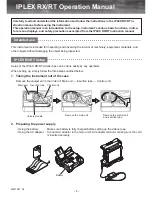
VNA concepts and features
R&S
®
ZNL/ZNLE
210
User Manual 1178.5966.02 ─ 19
In a diagram the grid lines overlaid to the trace correspond to points of equal magni-
tude and phase:
●
Points with equal magnitude are located on circles around the complex 0 that is
located at the center of the diagram.
●
Points with the equal phase are located on straight lines originating at the center.
The following example shows a polar diagram with a marker used to display a pair of
stimulus and response values.
Example: Reflection coefficients in polar diagrams
If the measured quantity is a complex reflection coefficient (S
11
, S
22
etc.), then the cen-
ter of the polar diagram corresponds to a perfect load Z
0
at the input test port of the
DUT (no reflection, matched input). The outer circumference (|S
ii
| = 1) represents a
totally reflected signal.
Examples for definite magnitudes and phase angles:
●
The magnitude of the reflection coefficient of an open circuit (Z = infinity, I = 0) is
one, its phase is zero.
●
The magnitude of the reflection coefficient of a short circuit (Z = 0, U = 0) is one, its
phase is –180 deg.
Smith
For "Smith" traces the response values are interpreted as reflection coefficients S
ii
and
represented in terms of their corresponding complex impedance Z(S
ii
) = R(S
ii
) + j X(S
ii
).
VNA screen elements
















































